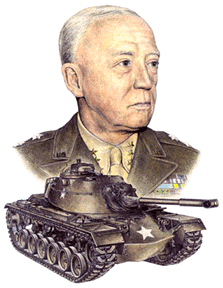

Patton’s II Corps was on the offensive, working to seize the Eastern Dorsal chain of the Atlas Mountains from the Axis forces, in a move that would threaten the right rear of the Germans and Italians defending the Mareth Line facing Field Marshal Bernard Montgomery’s British Eighth Army.ĭuring that time, the U.S. Two weeks after witnessing Patton unleash on Lieutenant Marcus, Slim Yowell was preparing his platoon for combat. The United States’ first encounters with the Axis after the Operation Torch landings were debacles. American prisoners march into captivity following the Battle of Kasserine Pass. The men called them “Purple Heart boxes,” a grim reference to the U.S.

Each M3 was thinly armored, offering enough protect to ward off small arms fire, but were prone to destruction when facing artillery shells or enemy tank fire. Being largely open-air, the half-track offered little protection to its five-man crew from desert heat, blowing sand and the occasional North African thunderstorm. The 20-foot-long, nine-ton half-tracks were nimble, capable of speeds up to 45 mph on level terrain. Built on a rear half-track chassis with regular wheels in the front for steering, the M3s provided the handling of a truck with the capabilities of a tank. The 601st would face their opponents with their lightly armored anti-tank vehicles, known as M3 Gun Motor Carriages. Lieutenant Yowell’s 1st Platoon of Company B would soon be driving into combat against German armored divisions of superior Panzers.

Serious business was at hand in the Tunisian desert. Patton’s message had its desired effect on every other group of soldiers he called out. Having spoken these words, Patton advanced to within a foot of Lieutenant Marcus’s face and snapped, “Any anyone wearing a wool knit cap without a steel helmet will be shot!” “Every man old enough will shave every day,” Patton snapped. Yowell and some of the officers had grizzled faces and wore wool-knit caps instead of combat helmets. Among them was Yowell’s platoon commander, 25-year-old First Lieutenant Lawrence Marcus-a Harvard graduate who hailed from Dallas, Texas, where his Jewish family’s retail fashion business, Neiman-Marcus, continued to thrive even during wartime. He was in conversation with several other officers of his battalion when Patton approached. Tall and lean, John Dee Yowell had been nicknamed “Slim” while attending Texas A&M before the war. Patton’s railings did not discriminate, and one of the units he addressed was the 601st Tank Destroyer Battalion. “Old Blood and Guts” barked at soldiers and fined those he found without proper uniform neckties and leggings. Upon arriving at his new headquarters on March 6, Patton-soon promoted to lieutenant general-set to work implementing stronger discipline within his troops.

Army’s II Corps, replaced Patton, a former tank commander who meant business. Major General Lloyd Fredendall had been relieved of his command of the U.S. Army was in a bad state, having suffered heavy losses in battles at Sidi bou Zid and Kasserine Pass during February 1943, near the western border of Tunisia. Three months after the Allied landings in North Africa, the U.S. Army commander was conducting inspections of his 1st Infantry Division and 1st Armored Division in the desert of Tunisia. It came on March 10, 1943, as the fiery U.S. Army’s first major triumph against the German army in World War Two.”įIRST LIEUTENANT John Yowell would never forget his first chance encounter with Major General George S. (Image source: US National Archives) “It would prove to be the U.S.


 0 kommentar(er)
0 kommentar(er)
